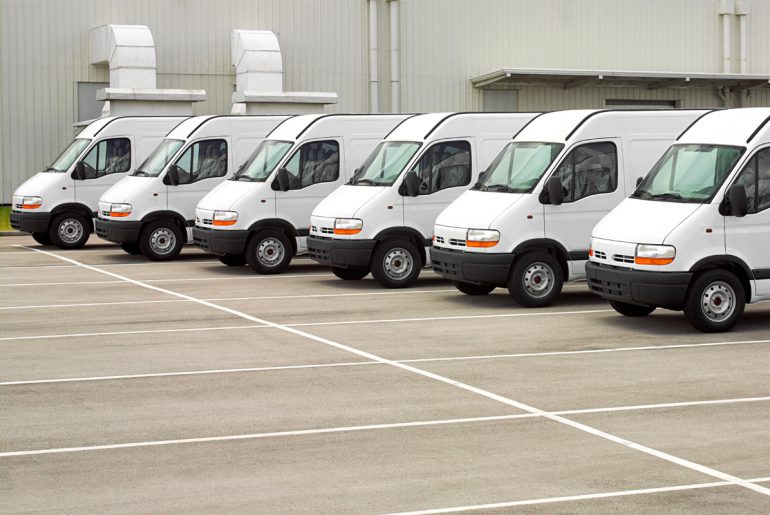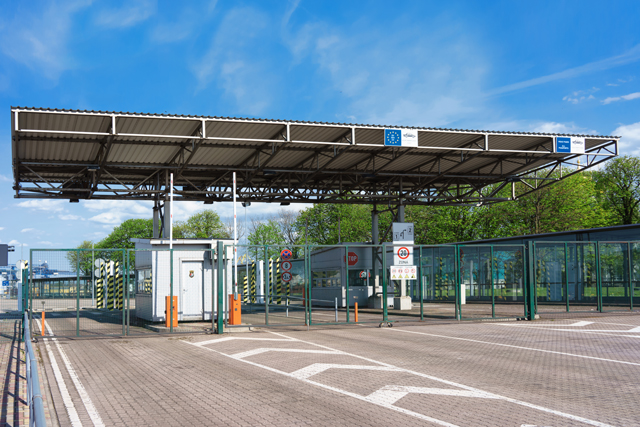You’ve got your customers, your orders and a fleet ready to start their trip. You may feel that you have this part of your business down to a science. But, as we all know, the world is constantly changing; so are your customers’ needs.
In order to maintain your hold on your current client base and grow your business, it is essential to keep your practices up-to-date and equipped to handle the modern distribution market, which experts anticipate will quickly grow another 16% by 2023.
Hold on to your drivers
On average, Food Service Distributors deliver over 24 million cases per day across 8.7 million miles. To get those packages to their destination, businesses need to rely on trustworthy drivers to transport their goods safely and on-time. But with costs rising to ship items, not to mention that more orders are being placed than there are trucks to deliver them, food distribution businesses can’t afford to lose drivers or spend too much time training replacements. This proves even more imperative since these rising costs don’t appear to be going anywhere soon. “The increases aren’t coming as fast as they were a year ago, but it took us a solid nine months to realize…that these increases are indeed being permanently secured with metal bolts to our costs,” J&J Snack Foods Corp. Chief Executive Gerald Shreiber said.
So how do you keep your drivers happy enough to keep on trucking for you?
- Encourage an atmosphere of trust and positivity – create a company culture that empowers employees at all levels and shows how they are valued
- Continue to check in with your drivers, even after they are up to speed – keep an open line of communication to help avoid or clarify any concerns
- Offer competitive benefits and incentives – if employees feel that they are able to maintain a healthy work/life balance then they are less likely to look for work elsewhere
- Support advancement opportunities – whether is it through educational reimbursement, or training opportunities it is imperative that employees wishing to learn more have an outlet to grow
While there is not much you can do to change the rising costs of transportation, you can maximize your time by preserving your fleet and maintaining experienced and valuable drivers.
Strive for sustainability
Another cost that many in the food distribution realm don’t have control over is the cost of fuel. As Michael Taylor, of Propane Education & Research Council (PERC) said, “The world’s changing; the climate’s changing. We’re finding out it’s a dirty fuel we’re relying on. Alternative fuels are here to stay.”
To combat the rising prices of propane fuels, some in the delivery industry have started embracing innovative electric vehicles. These machines come with the added benefits of lower maintenance, noise reduction and employee safety, and exhaust/emission reductions just to name a few. Their most attractive feature though, comes in the form of fuel cost savings. If you take the average cost of electricity in the U.S. of 12 cents per kWh, and factor it into the average average person driving the average electric vehicle 15,000 miles per year, it will only cost about $540.00 per year to charge it. Apply that math to the average food distribution fleet and the savings can become even more significant.
Maximize resources — for you and your customers
Due to E-commerce, the entire food service distribution industry has been tasked the challenge of getting goods to customers in a tighter timeline than ever before. In response to that demand, food distributors have been dispatching vehicles not loaded to capacity in order to fulfill clients’ expectations. However, since the only option to counter the high prices of shipping is to optimize current operations, this method is no longer feasible.
This method proves beneficial to both businesses and their customers since money is being saved across all fronts. Food distribution businesses can ensure that the money being spent during delivery is resulting in as many products being shipped as capacity allows, while on the other hand customers do not have to compensate by paying higher fees, which some businesses have charged to help offset the high transit costs.
Running a food service distribution business is no easy task. And with an entire industry valued at well over $1.1 trillion in revenue sitting on the line, it’s safe to say that all 940,000 businesses involved are looking for their piece of the pie.
But in order to secure their future in this market they need to modernize their operations while adjusting their practices and expenditures where it truly counts. By continually maintaining a steady fleet of trusted drivers, exploring sustainable options, and maximizing their resources these businesses will be left feeling more than satisfied with their place in the food distribution market.
WorkWave Route Manager offers a fruitful solution
Chomping at the bit to bring your food service distribution business to the next level? WorkWave Route Manager is ready to serve you the next-level solution. Jam-packed with all the route optimization tools and features needed to start increasing your ROI from day one, our GPS tracking solution helps you plan, route, track, and analyze your day all from one screen. Use the form below to connect with one of our professionals and discover how WorkWave Route Manager can start working for you.




